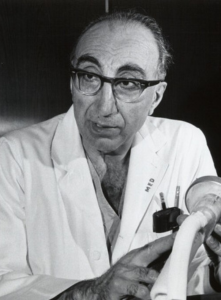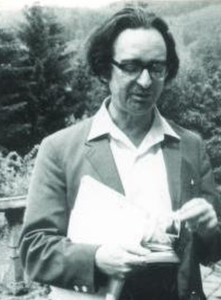
4 Arab American Scientists to Know
April is Arab American Heritage Month, a time to recognize the impactful contributions and achievements of Arab Americans in history.
Celebrate this month by learning about these four Arab American scientists and their monumental impacts on their fields.
Hunein F. “John” Maassab (1926–2014)

Nasal spray flu vaccine, courtesy of Getty Images
Hunein Maassab was born in Syria in 1926. He later came to the United States, where he studied at the University of Missouri and the University of Michigan. He earned four degrees, including a master’s in public health and a doctorate in epidemiology.
During his doctoral research in 1955, Maassab sat in the back of an auditorium as his professor announced Jonas Salk’s successful creation of the Polio vaccine. Maassab’s colleague, Rashid Bashshur, recalls this as the moment Maassab dedicated his life’s research to developing a safe and effective vaccine for influenza.
After earning his PhD, Maassab worked as a research assistant at the University of Michigan’s Department of Epidemiology and eventually climbed the ranks to become a full professor. In 1991, he became the school’s epidemiology chairman and founded the Hospital and Molecular Epidemiology program. Over the entirety of his long career, he worked to advance his nasal spray flu vaccine.
According to the University of Michigan, Maassab first isolated the Influenza Type A/Ann Arbor virus in 1960 and developed a cold-adapted virus just seven years later. Over the next 40 years, Maassab used the cold-adapted virus to advance his vaccine until the Food and Drug Administration approved it in 2002. His vaccine, FluMist, continues today to reduce influenza morbidity and mortality worldwide.
Michael E. DeBakey (1908–2008)

Michael E. DeBakey, Wiki Commons
DeBakey grew up in Louisiana, where he began his 75-year medical career. He received an extensive education in New Orleans through the 1930s and earned a master’s degree and an MD. He continued training in Europe, where he studied surgery for two years.
Throughout his life, DeBakey made several monumental medical innovations. While in medical school, he invented the roller pump, a critical component of heart-lung machines. He also researched and developed artificial hearts and ventricular assist pumps.
In 1948, DeBakey became the head of the Department of Surgery at Baylor University College of Medicine and served until 1993. He also worked as the CEO and president of the organization after it officially separated from Baylor University.
According to the National Institute of Health, DeBakey published over 1600 works and performed over 60,000 operations over his long career. Some of his most significant career accomplishments include the first coronary bypass operation and the first multiple organ transplant. He received many honors, including the Presidential Medal of Freedom, the United Nations Lifetime Achievement Award, and the Congressional Gold Medal. He also received more than 50 honorary doctorate degrees.
Hassan Kamel Al-Sabbah (1894–1935)

Hassan Kamel Al-Sabbah, Wiki Commons
Hassan Kamel Al-Sabbah was a Lebanese electrical research engineer whose over 70 US and International patents have made much of our modern technology possible. His research in Lebanon and the United States influenced many industries, from manufacturing to space exploration.
Al-Sabbah dreamed of turning the Arabian desert into a paradise with sun-powered cells that convert sunlight into energy. According to the Lebanon Center for Research and Development, the technology Al-Sabbah used to prototype his solar cells is still used today in space and aircraft electrical systems.
Many of Al-Sabbah’s inventions influenced General Electric engineers. They inspired the beginnings of electric cars, LCD televisions, pressure and temperature instruments, and arc welding machines used to manufacture heavy machinery like tanks, submarines, and ships.
His extensive research and inventive work have left an immeasurable impact on modern technology and made many of our everyday luxuries a reality.
Frank Harary (1921–2005)

Frank Harary, Wiki Commons
Frank Harary is known as one of the fathers of graph theory. He received a theoretical physics and applied mathematics education at Brooklyn College, Princeton University, and New York University. In 1948, Haray earned his doctorate from the University of California at Berkeley. Soon after, he accepted a position as a mathematics instructor at the University of Michigan.
Haray rapidly gained an international reputation for work in graph theory. According to the MacTutor History of Mathematics Archive, he was in great demand to give visiting lectures at mathematical societies, colleges, and universities across the world. His own records document visits to 87 countries.
He also held numerous visiting professorships throughout his career and spent short periods teaching mathematics at universities around the globe.
Harary received many awards and honors for his work in mathematics, including six honorary degrees. The Malaysian Mathematical Society made him a life member in 1974, and the National Academy of Sciences of India offered him a fellowship in 1985. Throughout his life, he edited over 20 mathematics journals and is responsible for discovering much of what we know today about graph theory.